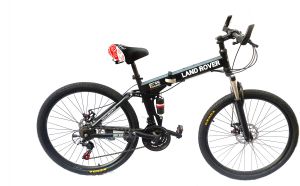Cost verses Price or How much will you really pay

Cost verses Price or The tale of 2 bikes
The age-old tension or question between a salesperson and a customer is “am I getting a good deal?” Wasn’t it the Romans who coined the phrase“buyers beware?” Let’s examine how we, as salespeople, can clearly build value, whether it’s a tangible or intangible value, with the customer.
What not to do:
First, it is imperative for a salesperson to avoid the trap of selling off price. Believe me when I tell you that there is no bottom when there is a race to the bottom.
Second, do not become a commodity. Why, might you ask? Answer, because the prices of commodities are easily calculated.
Third, build the value of the item or service you are selling. Be a defender of the faith! Don’t be afraid to be bold.
What to do:
First, acknowledge the customer without becoming adversarial. Express something like “hey, I’m on your team and I want to get the best deal I can get when I’m buying something.”
Second, build the value of the item or service. Review the features and benefits and defend its price. Explain why it’s at that price and how it’s worth every penny and then ask the critical question “Is it the price of the item or is it the cost you are worried about?” Typical response, “Well, what’s the difference?”
Third, differentiate and redefine price verses cost. This is the most critical step; this is where the magic happens, the shift in thinking begins.Get out a pad of paper or tablet and write. You must write and not just speak. We’ve been conditioned to believe what we see, but doubt what we hear. Have you ever heard the saying “seeing is believing?” Now tell your story illustratingthe difference between the price of an item andit’s cost
The Story

When I was 8 years old my dad and I went down to the Schwinn bike store to buy a bike. It was $65.00 dollars. Way too much for my dad. We ended up at the discount bike store and bought a $35.00 dollar bike. (the customer is seeing and hearing the difference in price) After I got the bike, a month later my handle bars broke and it was $4.50 to replace. 2 weeks later my sprocket broke over a jump and it was $15.00 to fix. Next month my baring went out and that was another $5.00 dollars. By the end of 6 months my chain broke. At this point my dad threw up his hands and cut the losses. We went and bought the Schwinn and I didn’t repair that bike for 6 years. The price of the discount bike was $35.00 dollars but it’s true cost was $59.50 for the first 6 months.
The Illustration~
Price- Schwinn bike $65.00 Price – Discount bike $35.00
Handle bars broke- 30 days $4.50
Sprocket broke- 45 days $15.00
Barings broke- 60 days $5.00
Total cost $65.00 Total cost $59.50
Cost for 5 years/month $1.08 Cost for 6 months of use $9.91
The Close! Now, is it price or is it cost you are concernedwith? The reason I stress that so strongly is simply this; a lot of people can beat us on price, but nobody can beat us on cost and since price is a onetime thing and cost is a life time expense, don’t you really want the best possible lowest cost?
